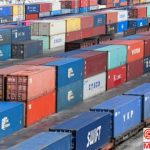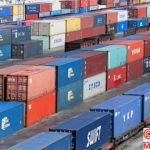Chinese supply chain highlights advantages in cross-border e-commerce
In the post-epidemic stage, cross-border e-commerce ushered in a big explosion, which also prompted merchants to earn a lot.
On May 26th, 2021 Global Express “G100 Overseas Program” brand signing ceremony was held in Shenzhen, China. At the meeting, Speedy Selling released a series of initiatives to help China’s superior supply chain brands go to sea this year, planning to establish direct and deep supply relationships with 100 “super brands” and support 10,000 emerging brands, and signing with ten brand merchants on site.
Wang Mingqiang, Vice President of Alibaba and General Manager of Global Speed Trading, said at the conference, “Against the backdrop of the global epidemic, cross-border retail e-commerce has stepped into the era of ‘supply to win’, and the advantages of China’s supply chain are further highlighted. The operational model of SpeedySales with brand and store dimensions, as well as the continuous improvement and upgrading of various infrastructures, will be the key to help Chinese brands seize this historical opportunity.”
Since the beginning of 2019, the COVID-19 epidemic has had a profound impact on the global economic and trade landscape. On the one hand, the epidemic has led to a clear “offline to online” trend in global consumption, with e-commerce penetration rates in all countries having increased significantly over the past year or so.
According to Eurostat data, last year, Europe’s e-commerce penetration rate has reached 72%. Online consumption habits allow consumers to have more access to global goods. In this regard, Chinese products with rich and complete varieties, high quality and good prices have a greater competitive advantage.
The key elements of cross-border e-commerce have changed since the epidemic focused on user demand and user behavior, in addition to changes in user base characteristics.
“A large number of offline stores overseas have closed, and many of the previous purely offline commercial supply chains are not running. From this point of view, many user demand changes from offline to online. This is why there has been a huge increase in e-commerce penetration over the past year, as the overall e-commerce ratio has maintained relatively stable numbers over the past 3 to 5 years, for example, Russia has doubled over the past year, with growth of more than 6%. This shows a huge change in user demand, which also brings us a huge change.” Wang Mingqiang said.
In addition, the characteristics of the user base has also changed.
“In the past few years in major overseas countries, the real economy is not doing so well, and last year the epidemic exacerbated the slowdown in GDP growth, and even negative growth. People have less and less money . The unemployment rate of young people in developed countries was relatively high in the past, and it has further intensified since the epidemic last year, so the user demand and user ability has changed, hoping to use the same amount of money to buy more things, to buy more stable quality and more cost-effective things, which is a very important trend.” Wang Mingqiang said to reporters.
After about 2010, young users have become more and more dependent on social networks due to the development of wireless and consumer networks. Social network development prompted young people to pursue individuality, they are different from their parents’ generation, not only are they willing to buy big brands, they want to pursue individuality, they are hoping to find the same way through social media, people who have the same hobby with him, these users are segmented. So in this case, rich and diversified supply, have their own R & D and design capabilities, to meet the user diversity of supplies will have more consumer market. So the user side will change a lot during the epidemic.
“When entering overseas markets, the biggest challenge is not knowing the needs of users in overseas markets. Sizzle connects directly with C-side users, allowing us to better understand C-side demand and making the production side more predictable and certain.” Lei Jie, general manager of China Green Union International Marketing Center, said.
“Compared to the period when we took orders for OEM, now our products have obvious brand premium effect and gross profit has increased by 20-30%.” Zhu Huanyu, general manager of Ensign Industries, said. The young company, whose founders are all post-95s, has built the KEMORELA brand by relying on the supply chain advantage of the kitchenware industry belt in Chaozhou, Guangdong, Zhu Huanyu’s hometown. From 2019 to 2021, KEMORELA’s sales will grow by 200%-300% annually, taking advantage of the rise of the “home economy” overseas.
CQI5 is committed to providing importers worldwide with product quality inspection services that far exceed those of our peers. If you are planning to import or have imported from China or Southeast Asian countries, please contact us cs’@’cqipro.com to learn more about how we can make your imports safer.
Disclaimer:
CQI5 article information from the Internet and contributions, the copyright of which belongs to the original author, and only represents the views of the original author. This website is only responsible for sorting out, typesetting and editing the articles, reproduced for the purpose of spreading more information, does not imply that it endorses its views or proves the truthfulness, completeness and accuracy of its content, and therefore does not assume any legal responsibility.
The information contained in this article is for reference only and is not intended as direct advice for decision-making.
If we inadvertently violate your copyright, please inform us, after verification, we will immediately correct or delete the content according to the requirements of the copyright holder, thank you! Contact, email: copyright@cqipro.com
This website has the final right to interpret this statement.
Welcome to reprint, please be sure to keep information complete.




